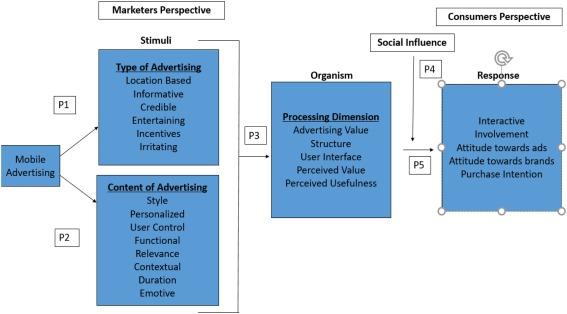Charting the Future: Key Directions for SEL in Schools
In today’s rapidly changing educational landscape, Social and Emotional learning (SEL) stands at the forefront of creating holistic, supportive, and successful school communities. As we look to the future, new directions in SEL are emerging—offering fresh opportunities for educators, students, and families alike. In this thorough guide, we’ll explore the key trends and innovations poised to shape SEL in schools, practical strategies for implementation, and the immense benefits that investing in students’ social and emotional skills can bring.
Understanding SEL: A Fast Overview
Social and Emotional Learning (SEL) is the process through which children and adults acquire and apply the knowlege,skills,and attitudes to:
- Understand and manage emotions
- Set and achieve positive goals
- Demonstrate empathy for others
- Establish and maintain positive relationships
- Make responsible decisions
SEL is more than a classroom curriculum—it’s a framework for nurturing resilient,caring,and academically-engaged learners.
Key Directions for SEL in Schools
As educational needs evolve, so too must SEL programs in schools.Let’s chart the most promising directions paving the way forward:
1. Integration with Academic Learning
Modern SEL initiatives are moving beyond isolated lessons and towards seamless integration with academic content. This approach helps students see real-world applications of SEL skills and strengthens overall engagement.
- project-based learning: Combining SEL themes with hands-on academic projects
- Literature connections: Using stories and texts to discuss empathy and other SEL competencies
- Collaborative assignments: Fostering teamwork and interaction skills
2. Emphasis on Equity and Inclusion
The future of SEL is inseparable from a commitment to diversity, equity, and inclusion (DEI). Schools are tailoring SEL programs to respect cultural backgrounds and address systemic inequalities.
- Choosing SEL materials that represent diverse identities
- Training staff on cultural responsiveness
- Engaging families from varied communities
3. Leveraging Technology and Digital Tools
Technology is transforming how SEL content is delivered, assessed, and supported:
- Online SEL platforms for self-paced learning and reflection
- Apps and games that build emotional intelligence skills
- Virtual support groups and communities for students
however, schools must carefully consider privacy and accessibility when adopting digital SEL solutions.
4. Data-Driven SEL Assessment
The use of data and analytics is growing, helping schools track SEL progress and fine-tune instruction.Balanced approaches respect student privacy while providing actionable feedback for educators.
- Surveys measuring school climate and student well-being
- progress tracking for specific SEL competencies
- Data dashboards integrating SEL and academic outcomes
5. Supporting Adult SEL
For SEL to thrive, teachers and staff need their own social-emotional support. Future directions include:
- Workshops on stress management and relationship skills
- Peer support circles among educators
- Mindfulness and self-care initiatives
Benefits of Investing in SEL Programs
Robust research affirms the value of SEL in schools. Hear’s why every school should prioritize SEL for both students and staff:
- Academic Gains: Students with strong SEL skills perform better academically, with improved grades, test scores, and graduation rates.
- Better Behavior: Reduced disciplinary referrals, absenteeism, and bullying incidents.
- Mental Health: SEL builds resilience,reduces stress,and provides coping tools—especially critical amid rising youth mental health concerns.
- Positive School Climate: SEL fosters safe, inclusive, and respectful learning environments.
- Long-term Life success: Social and emotional skills are key predictors of workplace achievement and lifelong well-being.
Practical Tips: How Schools can Advance SEL
Want to strengthen SEL in your school? Consider thes actionable strategies:
- Embed SEL into the whole school culture—in classrooms, hallways, extracurriculars, and policies.
- Engage students as partners: Involve student voices in SEL program design and feedback.
- Regular professional advancement: Provide ongoing training for educators in SEL practices.
- Cultivate family-school partnerships: Offer workshops and resources to help families reinforce SEL at home.
- Assess and adapt: Use data collection tools to guide continuous improvement, while safeguarding student privacy.
- Highlight role models: Share stories of staff and students who exemplify SEL competencies.
- Use evidence-based SEL programs: Choose curricula with proven track records and adaptability for your unique school community.
Case Study: SEL Transformation in Action
Sunrise Middle School (a pseudonym for privacy) began its SEL journey by forming an enthusiastic SEL team comprised of teachers, counselors, and administration.Here’s how their efforts made a difference:
- Integrated morning meetings: Each day began with connection circles, focusing on empathy and self-awareness.
- Restorative practices: Conflict resolution and peer mediation replaced punitive discipline for minor infractions.
- Family SEL nights: Parents were invited to learn about managing stress and building positive relationships at home.
- Student leadership: A new SEL ambassador program empowered students to lead mindfulness breaks and peer support sessions.
Result: Over two years, Sunrise saw a 30% reduction in behavioral incidents and a noticeable boost in statewide assessments.Student and staff surveys reported a marked improvement in school relationships and overall emotional safety.
first-Hand Experience: Voices from the Field
“The difference SEL has made in my classroom is outstanding. My students are more engaged,kinder to each other,and better able to handle challenges. SEL isn’t just another program—it’s the heartbeat of our school culture.”
- Amanda L., 5th Grade Teacher
“Having access to SEL support meant I felt heard and valued. learning to manage my anxiety and express myself helped me not just in school, but in my life outside of it.”
– Marcus J., High School Student
Conclusion: the Road Ahead for SEL in Schools
Charting the future of SEL in schools means championing equity, embracing innovation, and putting people—both students and teachers—at the heart of change. As educational communities recognize the proven benefits of social and emotional learning, schools are poised to offer more than just academic instruction; they are becoming incubators for kindness, resilience, and lifelong success.
Whether you’re a teacher, leader, parent, or policymaker, there’s a critical role for you in the future of SEL.By working together, we can build thriving communities where every learner is empowered to succeed—academically, emotionally, and beyond.

